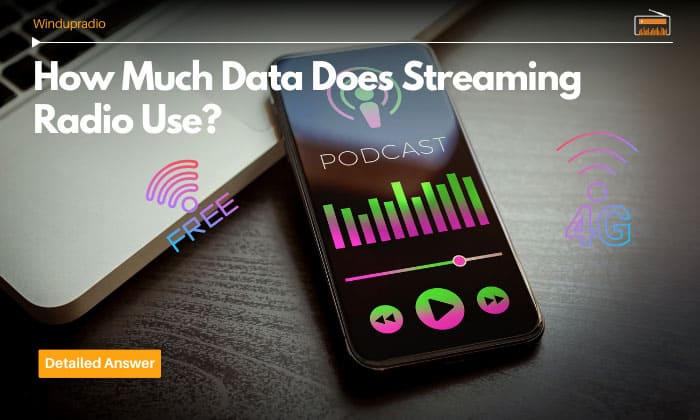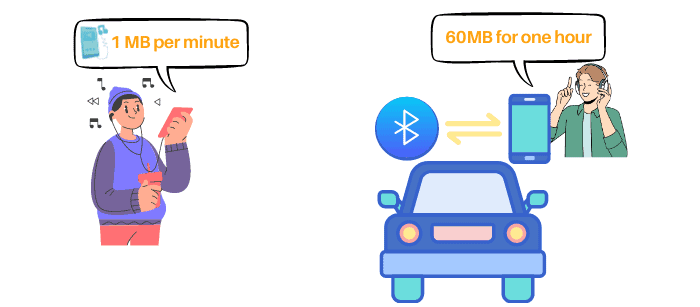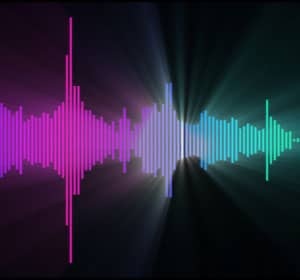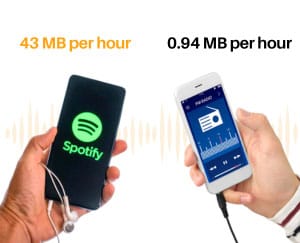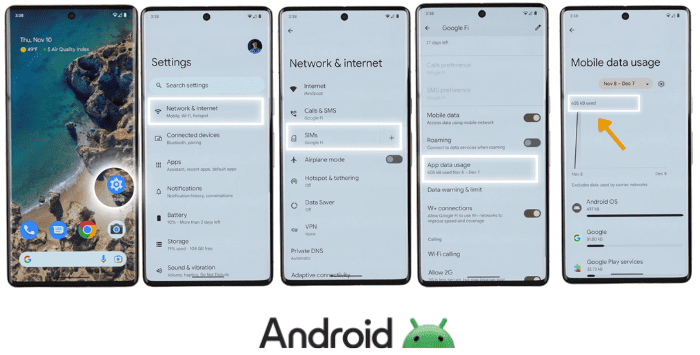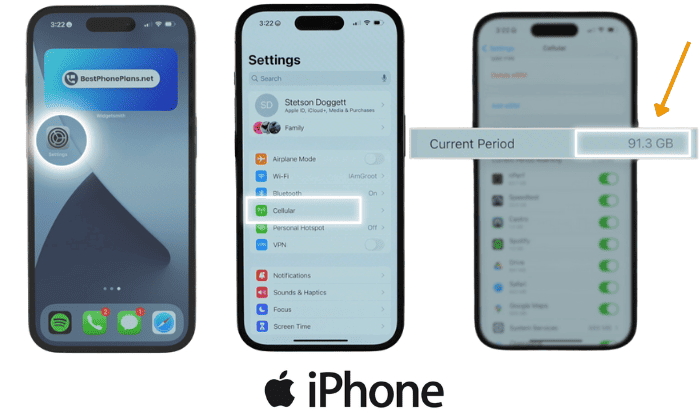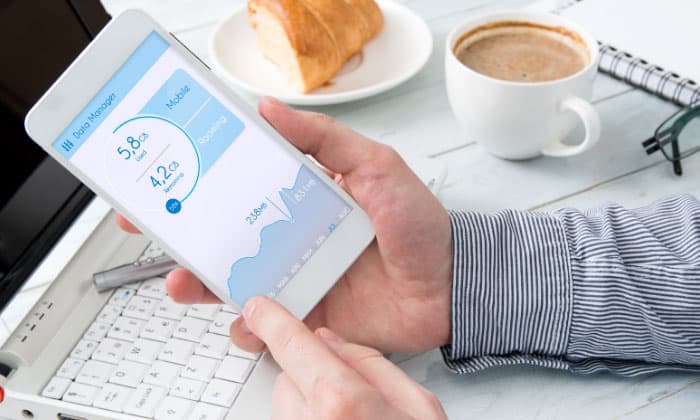In the age of the internet, online streaming is now one of the most popular ways to listen to the radio. It’s convenient, but there’s one problem – it can be data-heavy. If you don’t have unlimited bandwidth, it can also be expensive.
Many network carriers may offer unlimited calls and texts. Nonetheless, it’s seldom to find an unlimited data deal. If it’s available, it can be too expensive. Therefore, many are looking for ways to enjoy online radio while being mindful of their data consumption.
So, how much data does streaming radio use? It’s often about 60Mb per hour on your phone, varying due to the quality. Read on and find out.
Table of Contents
How Much Data Does Streaming Radio Use?
On average, listening on a smartphone internet radio will consume .94 MB per minute. For simplicity, however, we can round it up and assume that streaming audio uses 1 MB per minute.
Let’s say you’re driving to work for one hour, and you’re listening to the radio from your phone, which you can connect to your car’s Bluetooth radio. Based on this assumption, our data usage calculator shows that you’ll be using approximately 60MB for one hour.
Now, if you’re listening to the radio for one hour per day for 30 days, your monthly data consumption will be 1.8 GB on average.
If your data package allows only 1 GB of free data, you’ll have to pay an additional fee to your network.
The above computation, however, is based on the assertion that the radio has a standard bitrate of 128 kbps. A higher bitrate increases your data consumption. We’ll discuss this more in the next section of this guide.
Factors Affecting Data Usage
In this section, we’ll look at the most common factors that will impact data consumption when using internet radio.
1. Bitrate
In the context of radio, audio bit rate refers to the measurement of audio data processed at a given time, which is usually per minute. This measurement is expressed as kilobits per second (kbps).
The higher the bitrate, the higher the sound quality. However, there’s one caveat – it also equates to higher data consumption. Therefore, the higher bandwidth means you’ll use more of your internet allowance from a carrier.
The standard audio bitrate is 128 kbps. You’ll find this in streaming platforms like Spotify and Apple Music. Even when your internet is slow, you’ll probably have a good listening experience without the audio being prone to deterioration.
On the other hand, if you’re listening live on the radio, you’ll need a higher bitrate. This could be at least 256 kbps.
2. Audio Quality
Higher-quality audio will result in higher data consumption. The standard quality is 128 kbps. And as earlier mentioned, this will consume around 1 MB of data per minute. Under this speed, audio will load fast. It’s reliable, but the problem is that the sound quality is poor.
Meanwhile, for a better listening experience, you might want to switch to 320 kbps. This is high resolution, which also improves audio quality. While the sound quality is better compared to 128 kbps, it can be slow, aside from being data-intensive.
3. Radio App
While it might seem that all apps use the same data, this isn’t the case. Different apps will have different data consumption. For instance, Simple Radio uses about .94 MB per hour. On the other hand, Spotify only uses around 43 MB per hour.
How to Measure the Data
The easiest way to measure data consumption is to use your smartphone’s built-in feature that will allow you to track your usage.
On Android, you can measure usage by going to Settings, then Data Manager. Choose Network and Internet, then click on Mobile Data. From here, you can see the snapshot of your latest data consumption.
Meanwhile, on iPhone, head to Settings, and click on Cellular or Mobile Data. After this, the screen will show the data app usage.
Tips for Minimizing Data Usage
Save data and enjoy a good radio listening experience by doing the things we’ll briefly talk about below.
1. Change the Streaming Rate
As earlier mentioned, a higher stream rate means higher data consumption compared to a slower stream rate. It’s not always necessary to listen to high bitrates, especially if the program isn’t live. Lowering the bitrate is a quick way to save data.
The steps can vary, depending on the app or radio you’re using. Let’s say you’re using TuneIn radio. Here’s a quick step-by-step guide:
- Open the app and set it to the radio station you like to play.
- Once the station is playing, click Menu. This will be the three horizontal buttons you’ll find on the upper part of the screen.
- Click Choose Stream.
- Set it to the quality of bitrate you want the radio to play.
2. Choose the Right Radio Station
By choosing a low-data radio app, you can save money, especially if you don’t have an unlimited data plan. The Pandora radio app uses less data compared to most of its competitors. Under standard stream settings, it consumes only 20 MB every hour of playback.
3. Download Radio Streams
You can listen to radio on phone without using data by downloading the stream in advance. For instance, some apps will allow downloading a podcast for you to listen to later. The only problem is that the program isn’t live.
Conclusion
So, how much data does streaming radio use? Approximately, it will use .94 MB per minute, which translates to roughly 60 MB per hour. For instance, take note that different factors come into play, such as the bitrate or audio quality and the specific app you’re using.

Hi, I am Amaro Frank – the Wind Up Radio’s content editor and writer. Working with Adam is so much fun, as his stories and experiences enrich my knowledge about radio communications and radio accessories. My main tasks in Wind Up Radio are building content and generating great articles on different topics around radio accessories.


